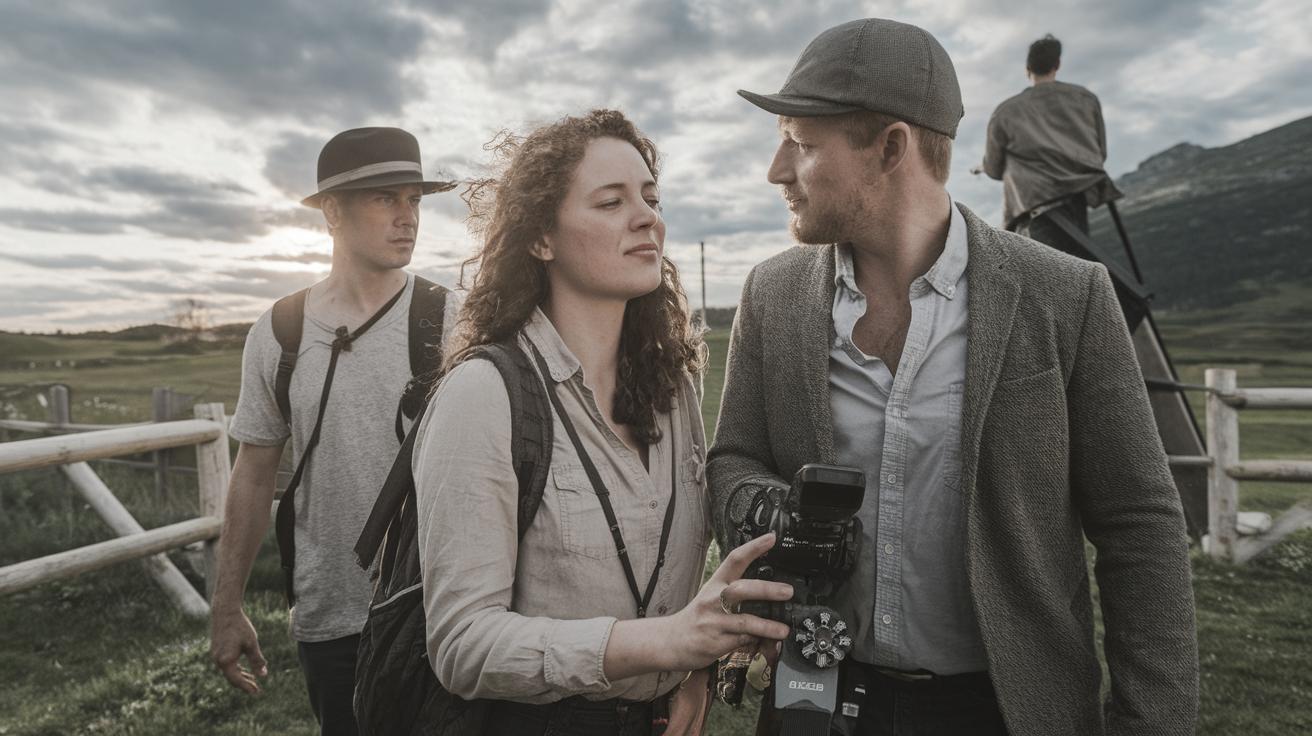How to Plan a Film Shoot Efficiently
Planning a film shoot efficiently is a multi-faceted process that requires meticulous attention to detail and strategic organization. Leveraging tools like StudioBinder can streamline this complex task. This comprehensive guide covers each step involved in planning your film shoot, from script breakdowns to sharing your shooting schedule. With insights on organizing strips and creating banners, this guide ensures you are well-prepared for a harmonious filmmaking experience. We’ll delve into best practices of scheduling your scene to foster collaboration among your film crew. By the end of this post, you’ll have a clear roadmap to effectively plan and execute your film shoot.
How to Plan a Film Shoot in StudioBinder
SCRIPT BREAKDOWNS EXPLAINED
The script breakdown is a vital first step in planning your film shoot as it involves a detailed analysis of your script. It serves as the foundation for the entire production planning process. By dissecting the script into its core elements, you gain a detailed understanding of the resources and efforts required for the shoot. This step is not just about identifying scenes; it’s about understanding every action, prop, and location that will bring the story to life.
StudioBinder provides powerful features to simplify the script breakdown process. It helps in categorizing different elements, tagging them for easy identification, and organizing data systematically. With these tools, both small-scale and large-scale productions can efficiently manage their pre-production requirements, enhancing both the accuracy and speed of planning.
SCRIPT BREAKDOWNS
Step 1 – Prepare the script
Preparing the script involves ensuring that it is in its final form, thoroughly proofread for errors, and clearly marked for breakdown. This prepares the groundwork and requires the script to be broken down scene by scene, isolating key elements. These elements include characters, props, special effects, and so on, tagged within the script for future reference.
Did You Know
Statistics show that having a complete and formatted script significantly reduces production slowdown. A well-prepared script serves as a blueprint, allowing directors and production teams to allocate resources optimally, thus reducing cost and time wastage.
PLANNING YOUR FILM SHOOT
Step 2 – Add strips
The next phase involves adding strips within the StudioBinder software. These strips are representations of scenes that encapsulate all relevant and identified script elements. Strips can be color-coded and modified according to needs, offering a visual representation of the film’s flow.
Did You Know
Color-coded strips are an industry standard for visualizing shooting sequences, helping teams quickly spot potential conflicts or resource bottlenecks, and facilitating a more balanced shooting schedule.
SCHEDULING YOUR SCENE
Step 3 – Order strips
Ordering strips is a critical task that ensures scenes are arranged logically for shooting. Scenes might not be shot chronologically due to location, actor availability, or other logistical concerns. This step demands foresight to predict on-set realities, ensuring a cohesive shooting plan.
StudioBinder allows for dynamic reordering with drag-and-drop functionalities, permitting seamless adjustments aligned to production constraints. This flexibility facilitates enhanced efficiency and adaptability during the film shoot schedule creation.
SHOOTING SCHEDULE ELEMENTS
Step 4 – Create banners and day breaks
Creating banners and day breaks divides the entire film shoot into manageable parts. Banners denote significant changes or scenes that require particular attention, while day breaks facilitate effective daily planning. This segmentation aids in the clear delineation of shoot days, optimizing resources and time allocation.
For example, banners can be used to indicate essential props or effects required on certain days, ensuring the crew is prepared ahead of time. Day breaks help in allocating scenes to specific shoot days, assisting in estimating production timelines and budget allocation.
COLLABORATING WITH YOUR SCHEDULE
Step 5 – Share the schedule
Collaboration becomes seamless when the shooting schedule is shared with the entire team. StudioBinder allows for easy sharing and collaboration, ensuring every crew member, from director to cast to crew, is on the same page regarding the production schedule.
By sharing schedules through robust platforms, communication is streamlined, reducing misunderstandings and miscommunications, leading to a smoother filming process. This further enhances team synergy and avoids unnecessary delays during production.
Up Next
Use stripboards to create a schedule
Stripboards in StudioBinder provide an intuitive way to lay out the scene schedule. The visual layout aids in identifying potential conflicts and organizing resources efficiently. With customizable options, stripboards become an indispensable tool in the hands of any production team looking to meticulously craft their shooting schedule.
Easily plan and schedule shooting days.
These tools and techniques allow for the seamless planning and scheduling of your shooting days. By incorporating modern software solutions, you position your production towards achieving efficiency, balance, and timely execution, ensuring both small and significant productions benefit from these structured approaches.
Summary of main points
| Steps | Description |
|---|---|
| Script Breakdowns | Analyzing and marking the script for planning the resource allocation. |
| Step 1 – Prepare the Script | Ensuring the script is finalized and ready for breakdown. |
| Step 2 – Add Strips | Creating scene strips in software, color-coded for easy identification. |
| Step 3 – Order Strips | Reorganizing strips for tactical shooting order. |
| Step 4 – Create Banners and Day Breaks | Segmenting schedules into day units for clarity. |
| Step 5 – Share the Schedule | Distributing and aligning the schedule with the team for collaboration. |


